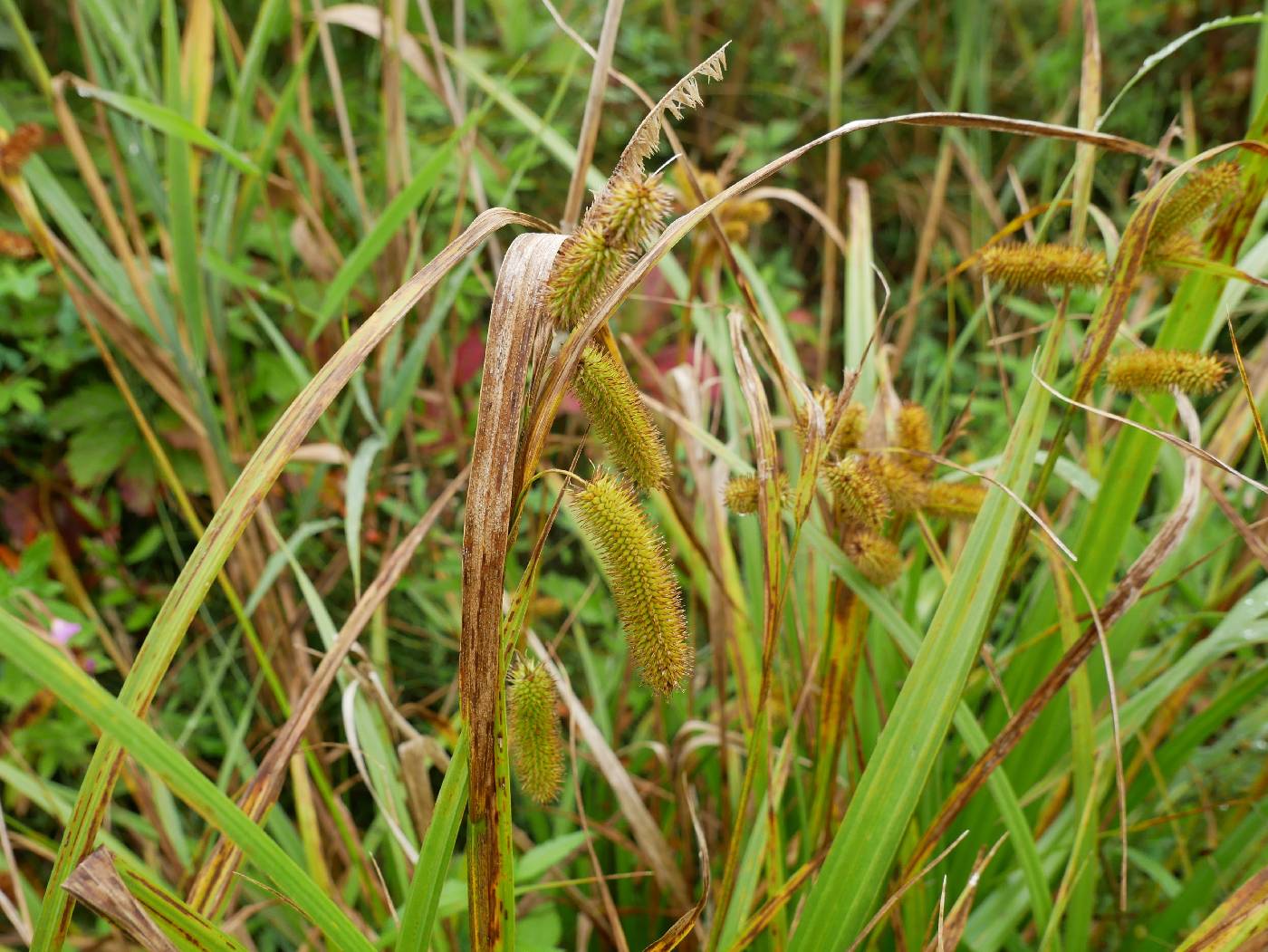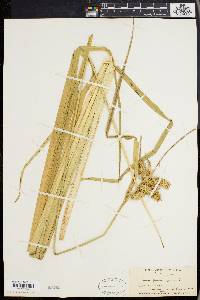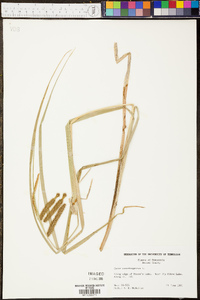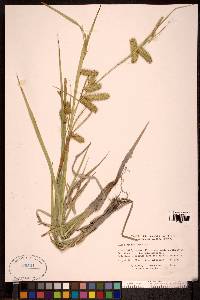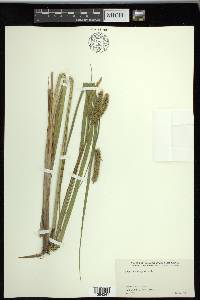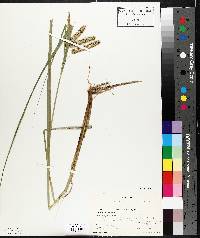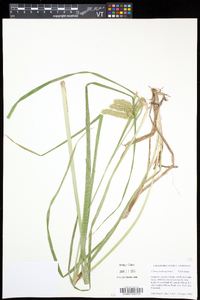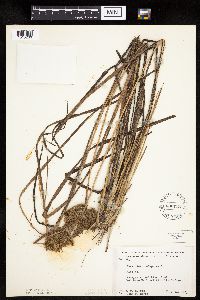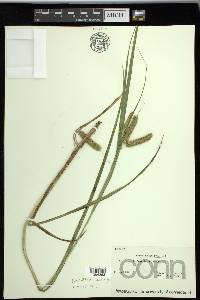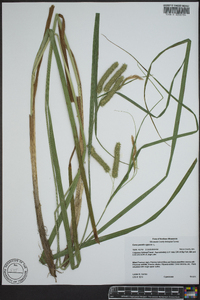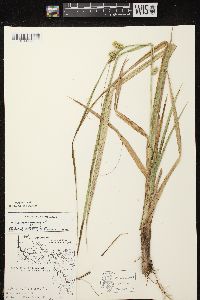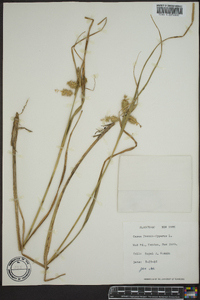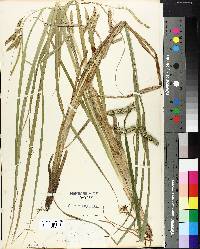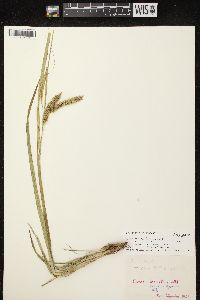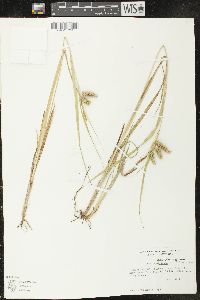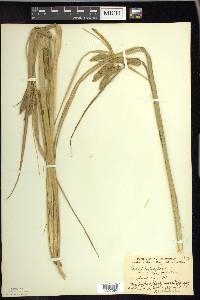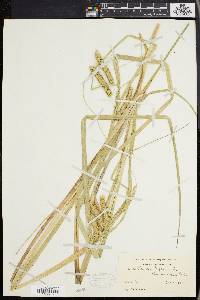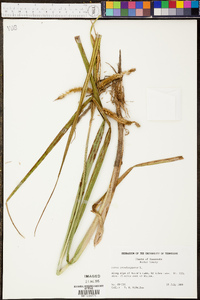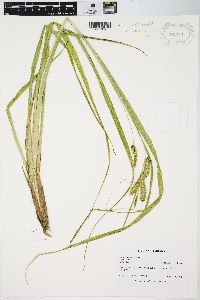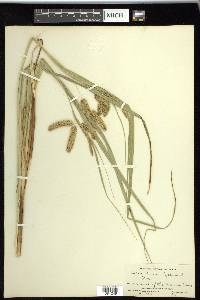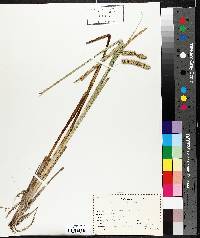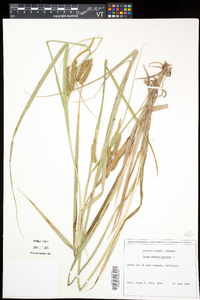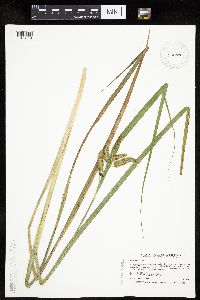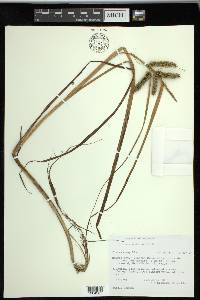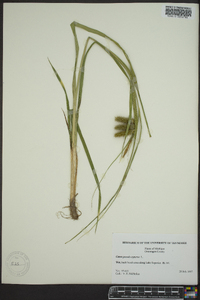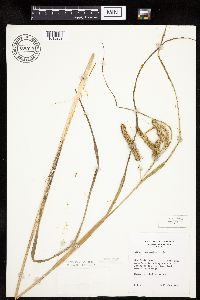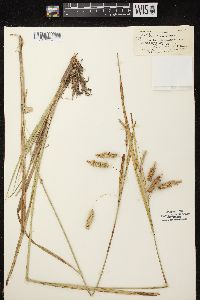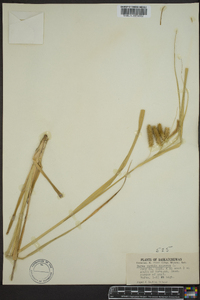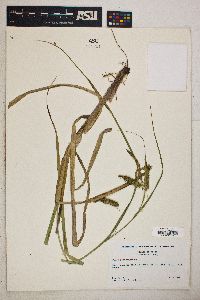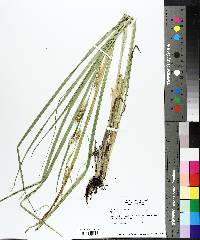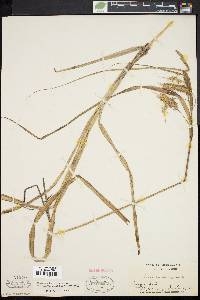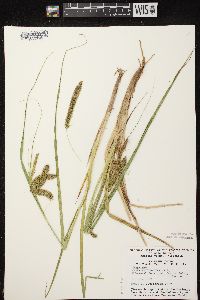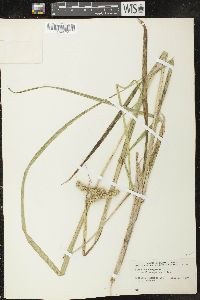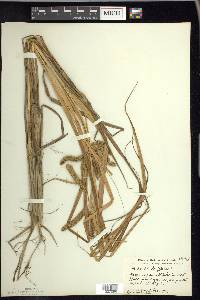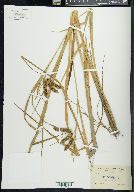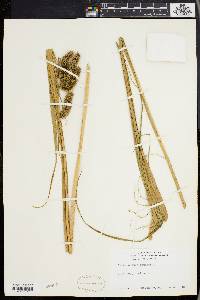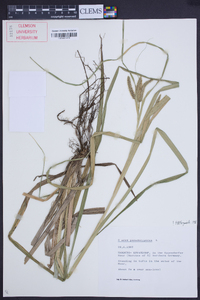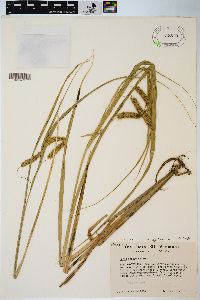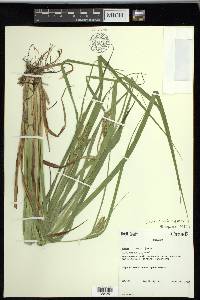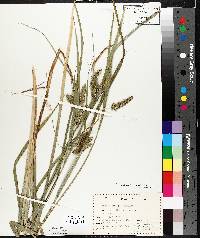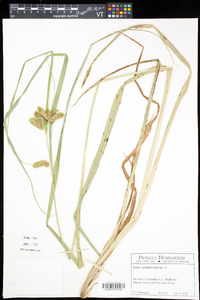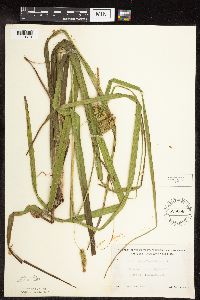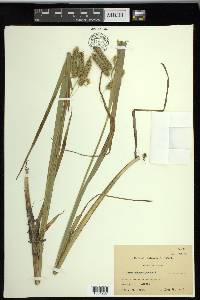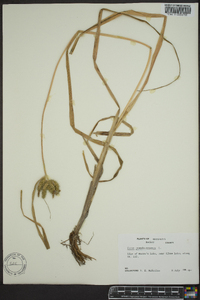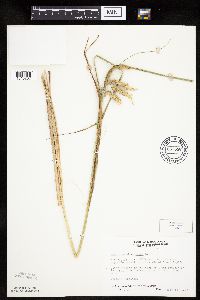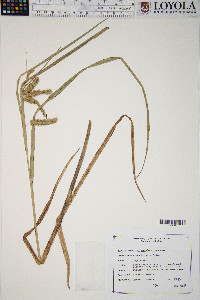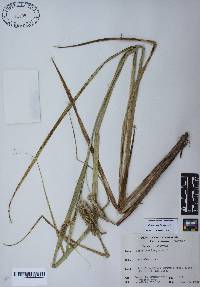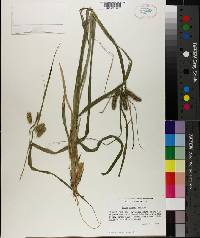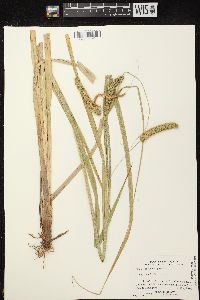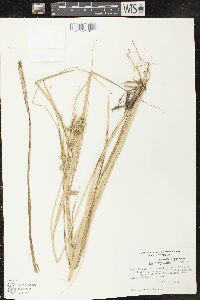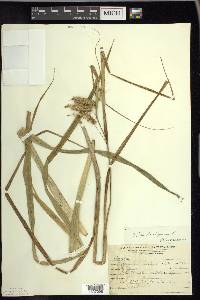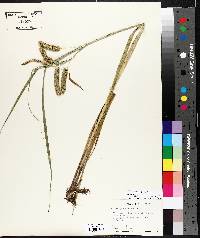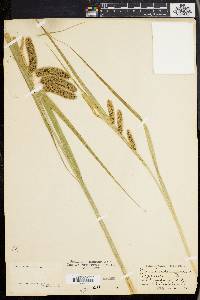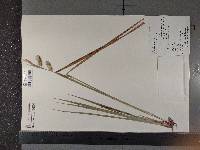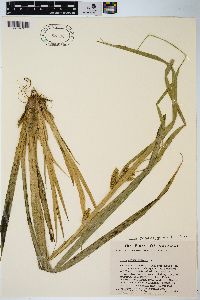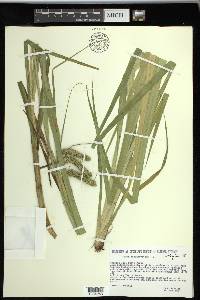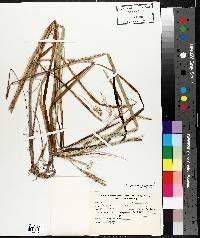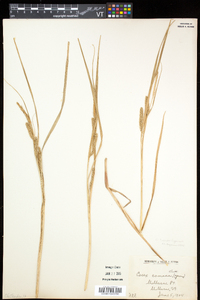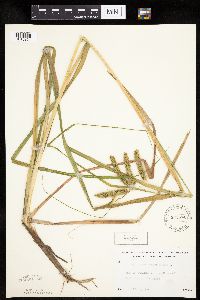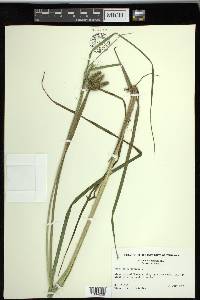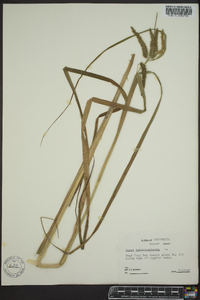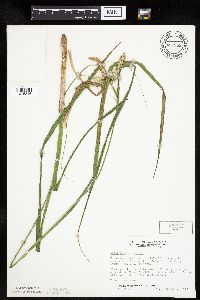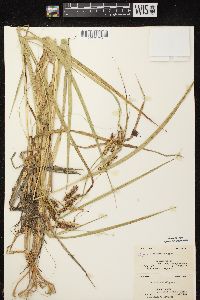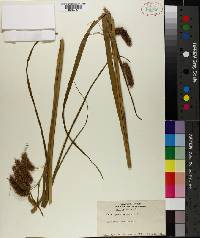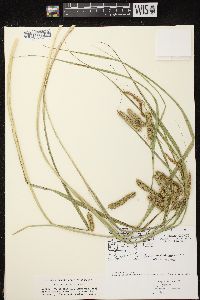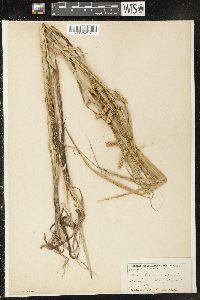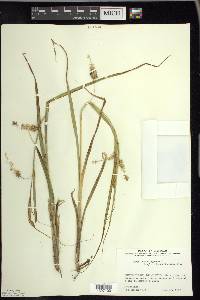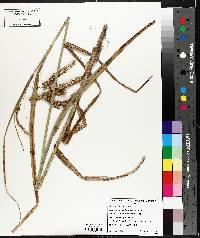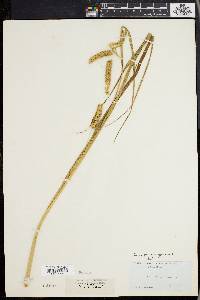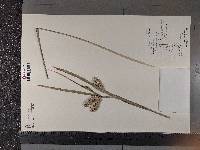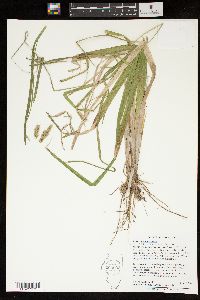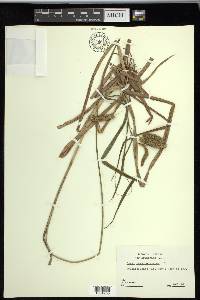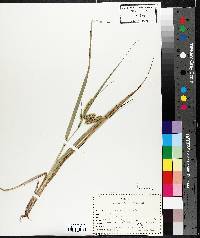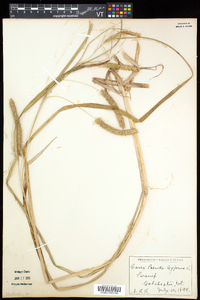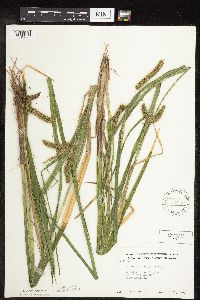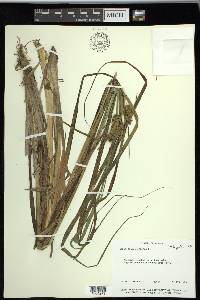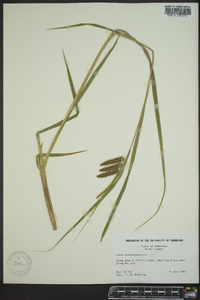Carex pseudocyperus
|
|
|
|
Family: Cyperaceae
Cypress-Like Sedge
[Carex pseudo-cyperus L., moreCarex pseudocyperus var. americana] |
Plants densely to loosely cespitose; rhizomes short, no more than 10 cm. Culms trigonous in cross section, 25-100 cm, scabrous distally. Leaves: basal sheaths pale brown (rarely faintly red tinged); ligules usually much longer than wide; blades mid to dark green, flat to W-shaped, 4-13 mm wide, glabrous. Inflorescences 4-15 cm; proximal bract 12-55 cm, greatly exceeding inflorescence; proximal 2-5 spikes pistillate, erect or the proximal pendent, cylindric, 9-12 mm thick; terminal 1 spike staminate or, rarely, gynaecandrous, androgynous, or mixed. Pistillate scales lanceolate-acuminate, 2.5-8.6 × 0.3-0.6 mm, the distal shorter and the proximal longer than perigynia, margins ciliate, apex scabrous-awned. Staminate scales scabrous-awned, sometimes also ciliate-margined. Perigynia spreading to reflexed at maturity, strongly 12-20-veined, veins usually separated by less than 2 times their width, confluent at or proximal to mid beak (except for 2 prominent lateral), tightly investing achene, narrowly elliptic to lanceolate, 3.4-6.1 × 1-1.7 mm, leathery, apex gradually tapered; beak poorly defined, 1.2-2.2 mm, strongly bidentate, teeth straight or slightly out-curved, 0.7-1.2(-1.4) mm. Stigmas 3. Achenes pale brown, trigonous, smooth. 2n = 66. Fruiting Jun-Aug. Swamps, wet thickets, stream, pond, and lakeshores, depressions in wet meadows, marshes, often in shallow water or on emergent stumps, floating logs, floating mats of vegetation in water; 0-800 m; Man., N.B., N.S., Ont., Que.; Conn., Maine, Mass., Mich., Minn., N.Y., Ohio, Pa., Vt., Wis.; Eurasia. Carex pseudocyperus is a smaller and more slender plant than C. comosa, but otherwise very similar. The two species often grow together where their ranges overlap and rarely produce sterile hybrids. Hybrids with C. hystericina are more frequent, and resemble C. pseudo- cyperus except for their sterility, the slightly more inflated and less reflexed perigynia, and the substantial red tinging on the basal sheaths.
Much like nos. 200 [Carex hystericina Willd.] and 201 [Carex comosa Boott]; stems stout; main lvs 5-15 mm wide; lowest bract commonly much surpassing the infl; pistillate spikes approximate or the lowest separate, 3-7 נ1 cm, spreading or drooping, the lowest long-peduncled, the upper peduncles shorter; pistillate scales with very small, reddish-brown body, the pale midvein excurrent into an awn nearly as long to longer than the perigynium; perigynia ±reflexed, 4.2-6.2 mm, firm-textured and only slightly or scarcely inflated, obtusely trigonous, stipitate, slenderly ovoid, gradually tapering to the long beak with straight, parallel teeth 0.6-1 mm; 2n=66. Swamps and bogs; Nf. to Sask., s. to Pa., Ind., and Minn. Gleason, Henry A. & Cronquist, Arthur J. 1991. Manual of vascular plants of northeastern United States and adjacent Canada. lxxv + 910 pp. ©The New York Botanical Garden. All rights reserved. Used by permission. From Flora of Indiana (1940) by Charles C. Deam Rare on lake borders and in sloughs and swamps in northern Indiana where it reaches the southern limit of its range. Like C. comosa it frequently grows in shallow water, rooted in muck. ...... Indiana Coefficient of Conservatism: C = 10 Wetland Indicator Status: OBL |

